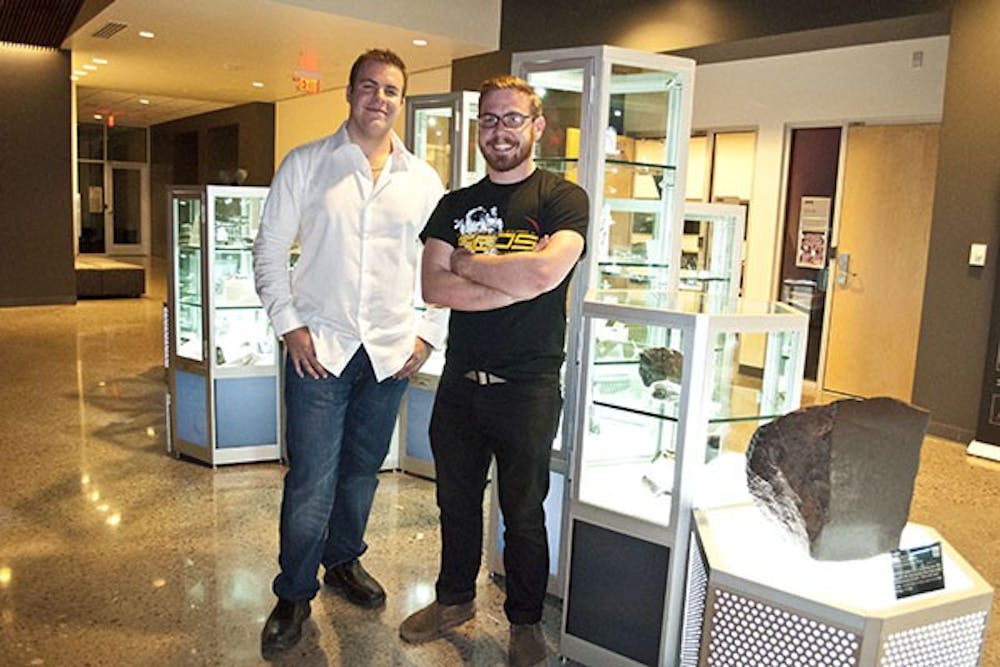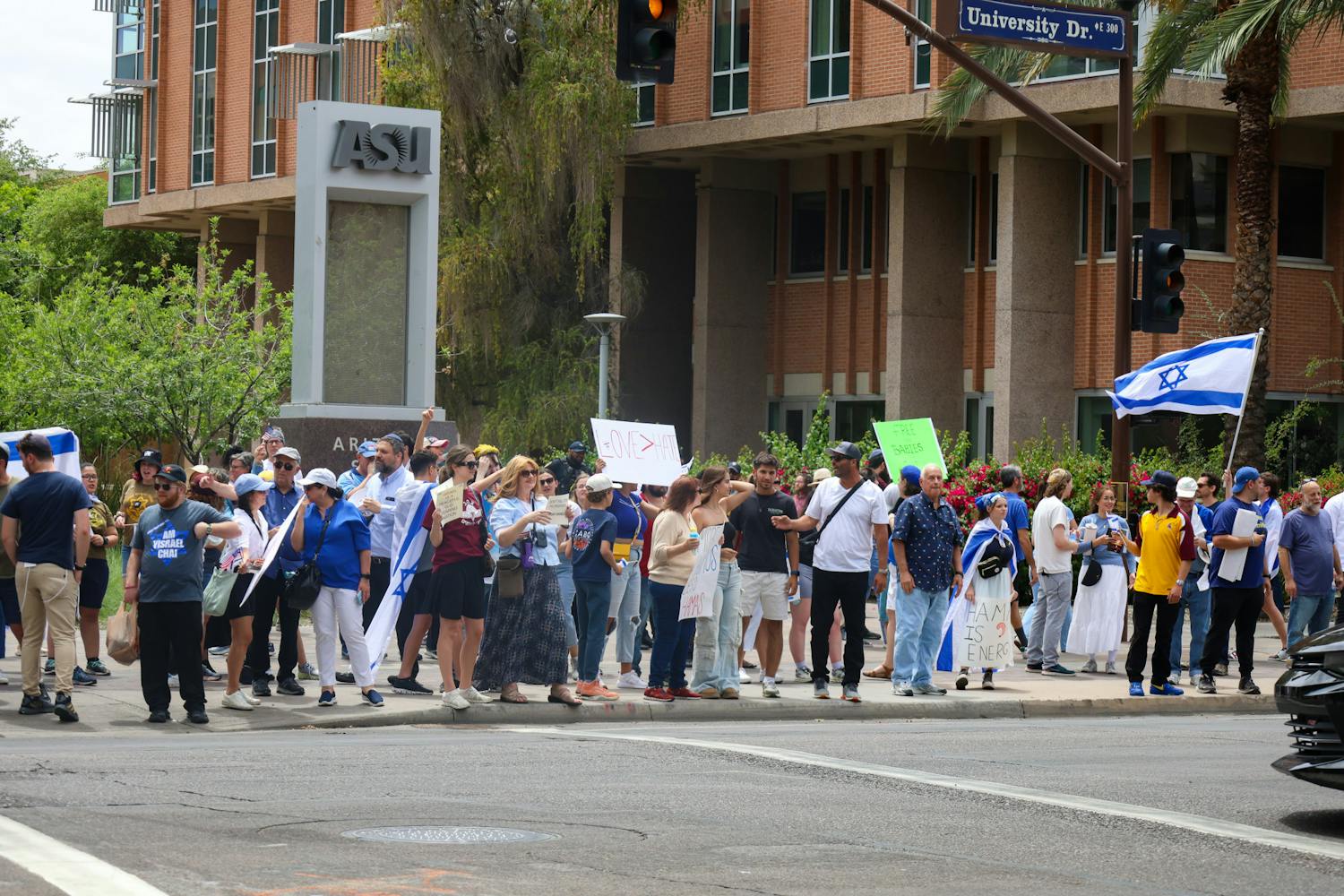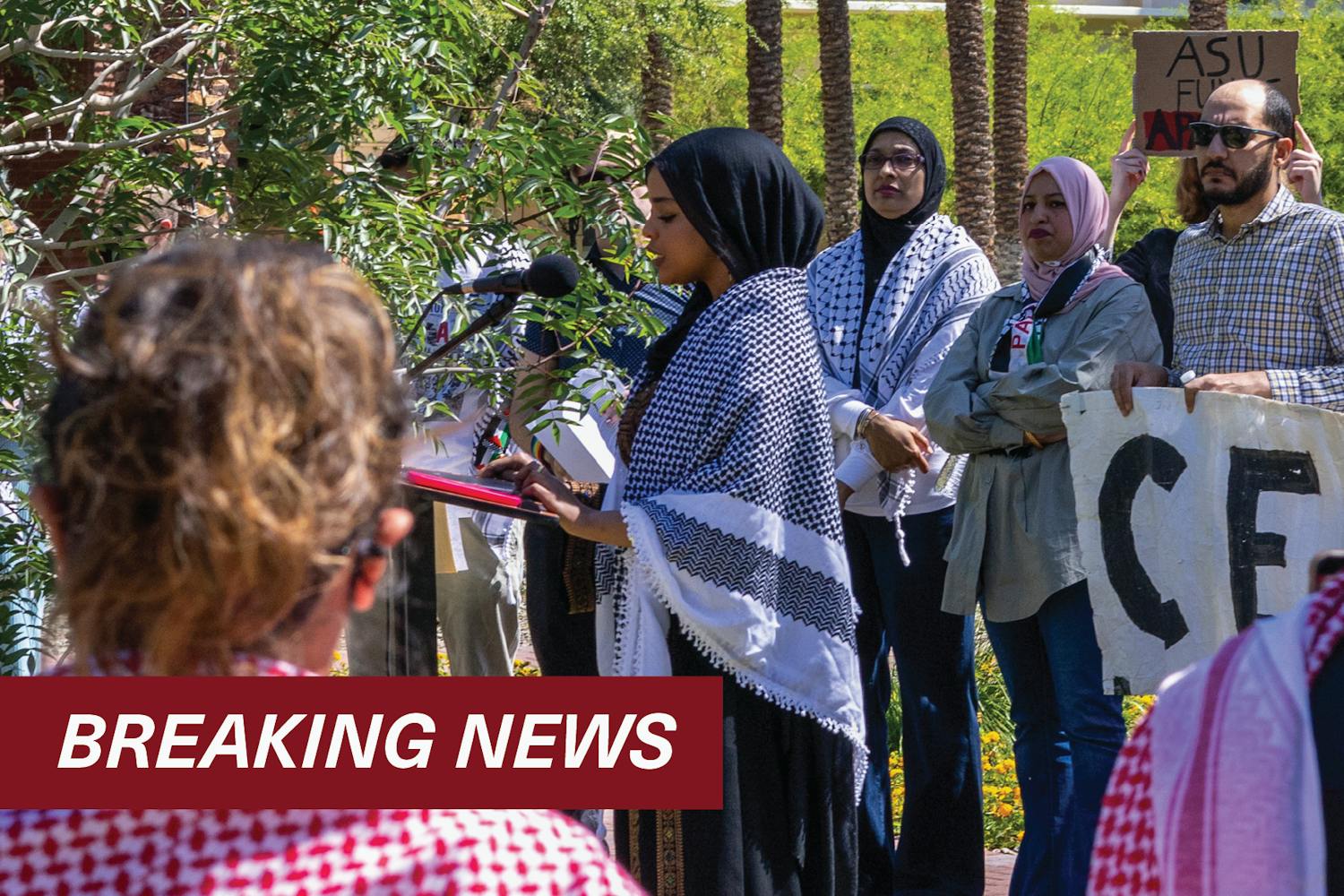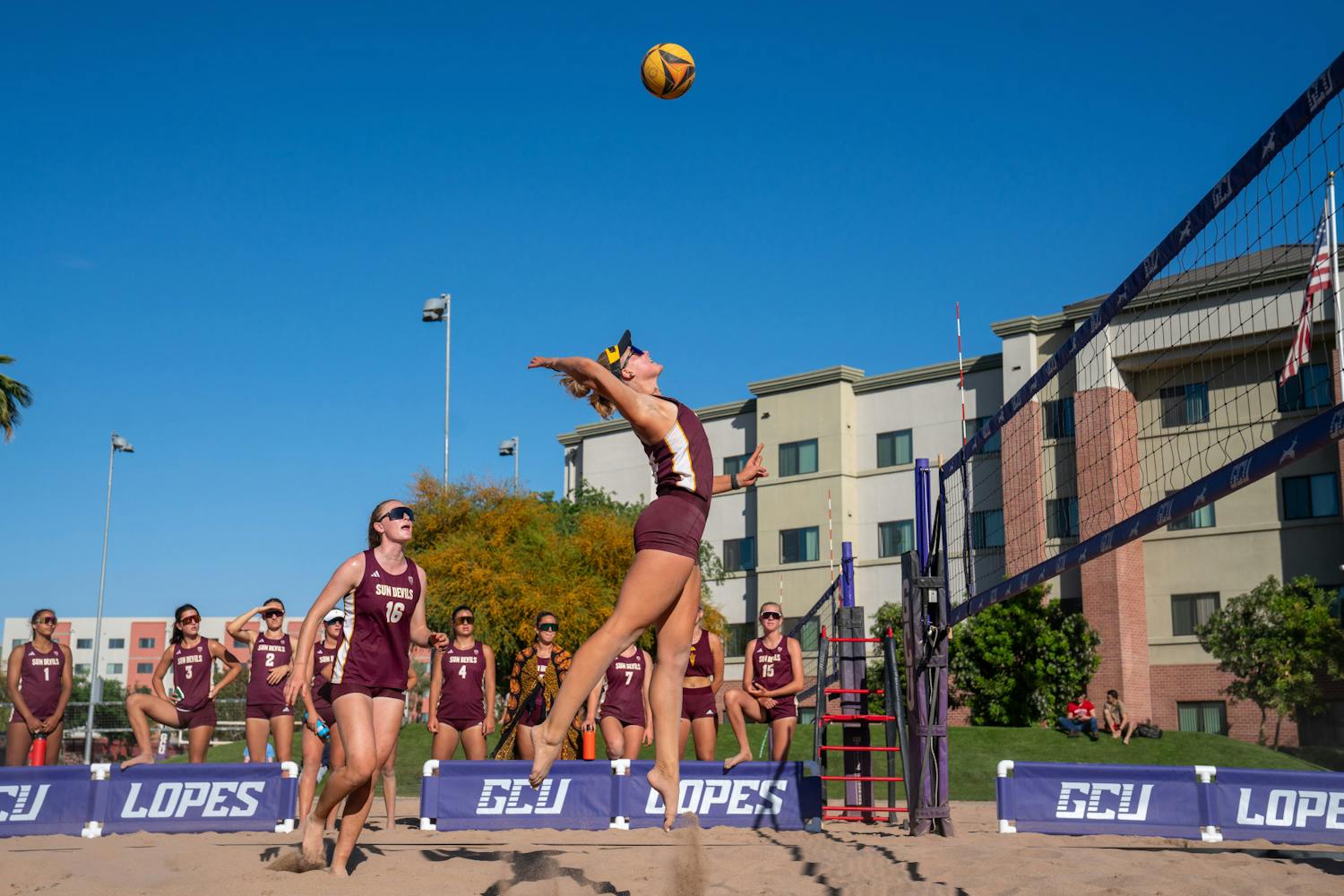 Economics junior John Conafay and computer science junior Jack Lightholder stand next to the Faith meteorite in the Interdisciplinary Science and Technology Building 4 on the Tempe campus. (Photo by Katie Dunphy)
Economics junior John Conafay and computer science junior Jack Lightholder stand next to the Faith meteorite in the Interdisciplinary Science and Technology Building 4 on the Tempe campus. (Photo by Katie Dunphy)Corrections added.
Thanks to economics junior John Conafay and computer science junior Jack Lightholder, the universe, though infinite, doesn’t seem as big as it once did. The students have helped bring SpaceVision 2013 to ASU.
SpaceVision is the largest student-led space conference in the world. Conafay and Lightholder, who are members of the ASU chapter of Students for the Exploration and Development of Space, started working a year ago to bring it to the University.
This international event has occurred annually since 2007. SEDS itself has existed since the 1980s.
“(There will be) really phenomenal keynote speakers," Conafay, president of the ASU SEDS chapter, said.
Bill Nye the Science Guy, Phil Plait the Bad Astronomer, and Bob Richards, the founder of SEDS, headline this group.
Professors at ASU have helped design some well-known technology and have participated in several large missions, including the Mars Curiosity rover. A replica of the rover is on display at ASU.
While ASU is not playing host to Curiosity, images are sent to the University for study from NASA headquarters in Washington D.C.
“(ASU is) the admissions operations center for the Pam Cam imaging and analysis crew,” Lightholder, the vice president of SEDS at ASU, said. “They analyze the images taken by the navigation … and do analysis to determine where they want to move the rover.”
With technology and experience, ASU is the epitome of a host for SpaceVision and joins the ranks of past hosts, including MIT, Boulder, and Buffalo.
“At SpaceVision every year, bids are put in generally well before the SpaceVision conference,” Conafay said.
He said other schools had been preparing their applications for two to three months.
“(The bid is) essentially a comprehensive plan for how you intend to pull this off,” Lightholder said.
At SpaceVision 2012, Conafay decided he wanted to host it the following year.
“We created the bid in four hours and presented it the next day,” he said.
Conafay said hosting SpaceVision will help his group at ASU immensely.
“We had only been around for three years at the time, so we thought it would be a major boon for SEDS ASU,” he said. “It really got us on the right track and helped us inspire a lot of people around the area.”
The SEDS group at ASU set off to work, but not before enlisting the aid of another school.
ASU teamed up with the UA to put on the 2013 conference.
“We don’t have a rivalry,” Lightholder said. “The scientific community there and here really collaborate wonderfully, and we’re both major universities.”
Communication is also key, Conafay said.
“We’ve all kind of wanted to bring SEDS a little bit more regional and start a much better communication between the chapters,” he said.
Danny Pagano, the former communications officer of the SEDS group at UA, compared the relationship to that of international space organizations.
“There’s a lot of international cooperation,” he said. “We’ve really been trying to foster that same interdisciplinary sphere of cooperation."
Pagano said the two groups have not met in person very often over the year.
Social networks such as Skype, Facebook, and Google Chat have proved indispensable for the team.
“There’s a lot of division of labor,” Pagano said. “People get placed on different committees."
These committees include location search, catering, and contacting guests.
There are also going to be panels of guest speakers, Pagano said.
“You have more than one speaker up who are all knowledgeable about the same topic and they go head to head and share their thoughts,” he said.
SpaceVision will offer activities for its attendees, including a rocketry project and a hack-a-thon workshop.
“We’re doing the first ever hack-a-thon, featuring the gravity development board," Lightholder said. “Essentially, you’re going to have 10 teams and give them a whole mess of electronics.”
The teams have to come up with the best idea to use the board, which is the first space-rated development board.
With so much happening, SpaceVision 2013 is a good experience for beginning students looking into a space program.
“It’s a great opportunity for people that are young in the industry,” Lightholder said. “It really is a game-changer for some of the people and their perspectives.”
Reach the reporter at lmnewma1@asu.edu or follow him on Twitter @logan_newsman
Correction: An earlier version of this article misstated the location of the NASA headquarters and incorrectly identified ASU's involvement with the Mars Curiosity rover. A caption also incorrectly stated the location of the Faith Meteorite on ASU campus.




